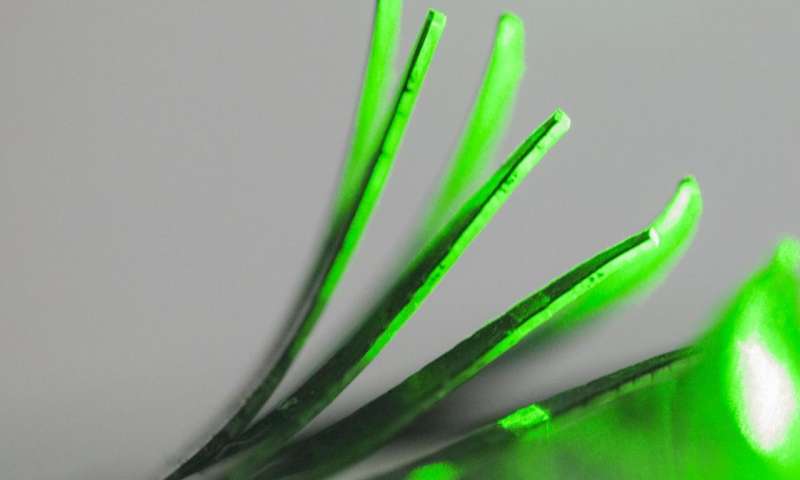

Contact: Manager Yang
Hotline: 950-4048-3964 (free)
Tel: 0510-85386636
Mobile: 18011518665
Shangmeng Technology Wuxi Co., Ltd.
Address: A1-602, Tianan Smart City, No. 228 Linghu Avenue, Xinwu District, Wuxi City, Jiangsu Province
Researchers at the Tufts University School of Engineering have developed magnetic elastomer composites that move in different ways when exposed to light, increasing the simplicity of these materials from simple engines and valves to solar arrays. The possibility of various products to complex sports. Bend to the sun. The study was published today in the Proceedings of the National Academy of Sciences . 
In biology, there are many examples of light that can cause motion or change - imagine that flowers and leaves turn to the sun. The photoactuated materials produced in this study are based on the principle of Curie temperature - higher than the temperature at which certain materials will change their magnetic properties . By heating and cooling the magnetic material, its magnetic properties can be turned off and on. Biopolymers and elastomers doped with ferromagnetic CrO2 heat up when exposed to laser or sunlight, temporarily losing their magnetic properties until they cool again. The basic motion of the material forming the film, sponge and hydrogel is caused by nearby permanent magnets or electromagnets and can manifest as bending, twisting and swelling.
“We can combine these simple actions into more complex movements such as crawling, walking or swimming,” said Dr. Fiorenzo Omenetto, Ph.D., professor of engineering at the Institute of Engineering and Frank C. Doble. Tufts. “These actions can be triggered and controlled wirelessly by light.”
Omenetto's team demonstrated these complex movements by building soft fixtures that capture and release objects in response to light. "One of the strengths of these materials is that we can selectively activate certain parts of the structure and use local or focused light to control them," said Meng Li, the first author of the paper, "unlike other liquid-driven materials based on liquid crystals." These materials can be designed to move toward or away from the direction of the light. All of these features enable the creation of large and small objects through complex, coordinated motion."
To prove this versatility, the researchers built a simple "curie engine." The light actuated film is formed into a ring and mounted on a needle post. Placed near the permanent magnet, when the laser is focused on a fixed point on the ring, it will partially distort the portion of the degaussing ring, creating an unbalanced net force that causes the ring to rotate. As it rotates, the demagnetization point recovers its magnetization and the new point is illuminated and demagnetized, causing the engine to rotate continuously.
Materials useful in the manufacture of photoactuated materials include polydimethylsiloxane (PDMS), which is a widely used transparent elastomer, typically formed into a flexible film; and silk fibroin, which is a universal biocompatible Sex materials, with excellent optical properties, can be formed into a wide variety of forms - from film to gel, thread, block and sponge.
“With additional material patterns, light patterns and magnetic field control, we can theoretically achieve more complex and fine-tuned movements such as folding and unfolding, microfluidic valve switching, micro and nano-engines, etc.,” says Omenetto.
For more information: Meng Li et al., Flexible Magnetic Composites for Light Control Drives and Interfaces, Proceedings of the National Academy of Sciences (2018). DOI: 10.1073 / pnas.1805832115
Previous: Do you know antibacterial materials?
Address:Tianan Smart City A1-602, No. 228 Linghu Avenue, Xinwu District, Wuxi, Jiangsu, China TelePhone:0510-85386636 Fax:0510-85384339 E-mail:info@solmontech.com
KeyWord: